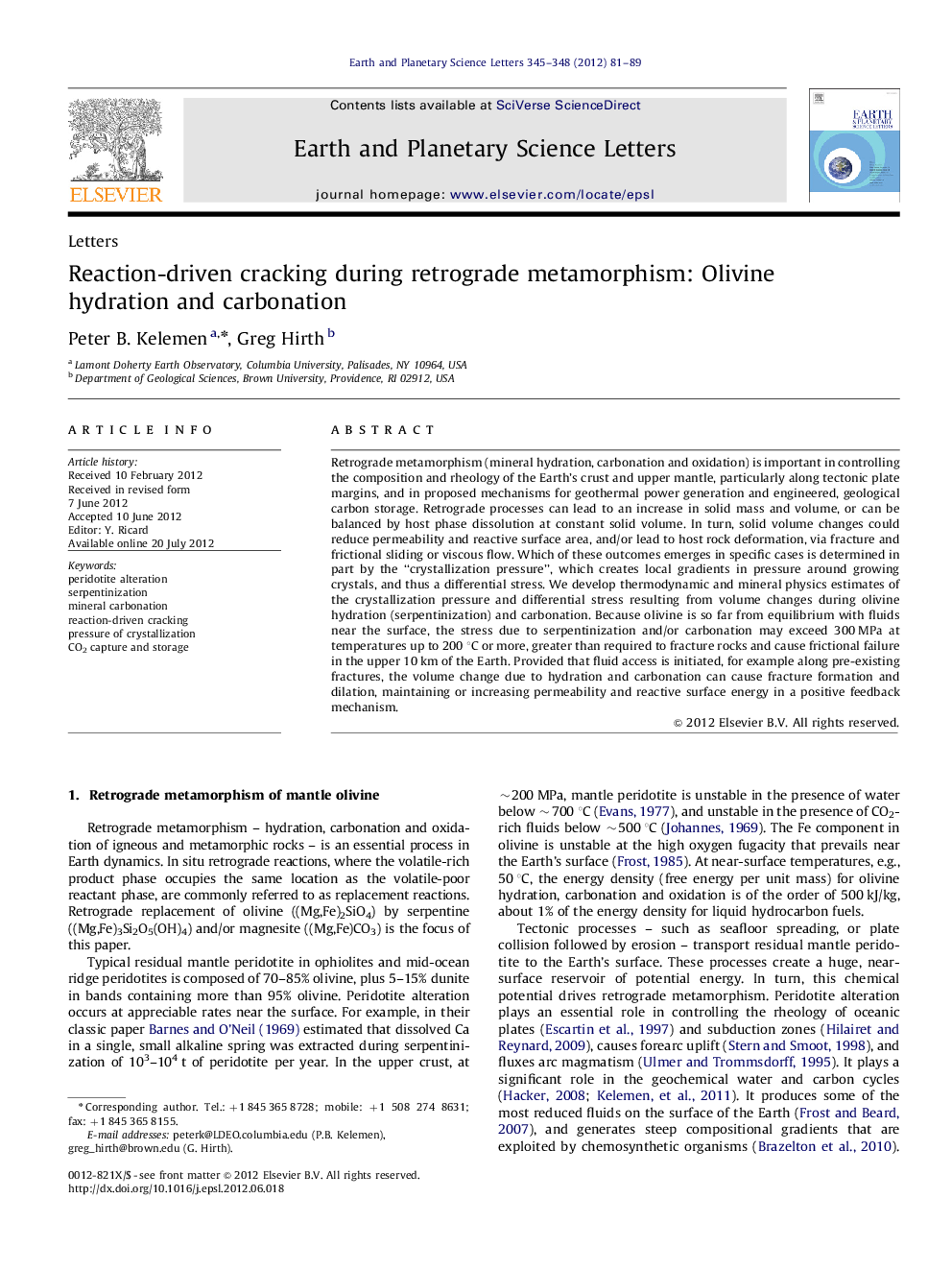| Article ID | Journal | Published Year | Pages | File Type |
|---|---|---|---|---|
| 6430566 | Earth and Planetary Science Letters | 2012 | 9 Pages |
Retrograde metamorphism (mineral hydration, carbonation and oxidation) is important in controlling the composition and rheology of the Earth's crust and upper mantle, particularly along tectonic plate margins, and in proposed mechanisms for geothermal power generation and engineered, geological carbon storage. Retrograde processes can lead to an increase in solid mass and volume, or can be balanced by host phase dissolution at constant solid volume. In turn, solid volume changes could reduce permeability and reactive surface area, and/or lead to host rock deformation, via fracture and frictional sliding or viscous flow. Which of these outcomes emerges in specific cases is determined in part by the “crystallization pressure”, which creates local gradients in pressure around growing crystals, and thus a differential stress. We develop thermodynamic and mineral physics estimates of the crystallization pressure and differential stress resulting from volume changes during olivine hydration (serpentinization) and carbonation. Because olivine is so far from equilibrium with fluids near the surface, the stress due to serpentinization and/or carbonation may exceed 300 MPa at temperatures up to 200 °C or more, greater than required to fracture rocks and cause frictional failure in the upper 10 km of the Earth. Provided that fluid access is initiated, for example along pre-existing fractures, the volume change due to hydration and carbonation can cause fracture formation and dilation, maintaining or increasing permeability and reactive surface energy in a positive feedback mechanism.
⺠Olivine is far from equilibrium with air and surface waters. ⺠ÎG/ÎV for olivine hydration and carbonation is >300 MPa at <200 °C. ⺠Deviatoric stress >300 MPa fractured plagioclase crystals hosting hydrated olivine. ⺠Olivine alteration can fracture rocks and cause frictional failure to >10 km depth. ⺠Stresses for constant volume replacement are greater than failure limit, so are not attained.
